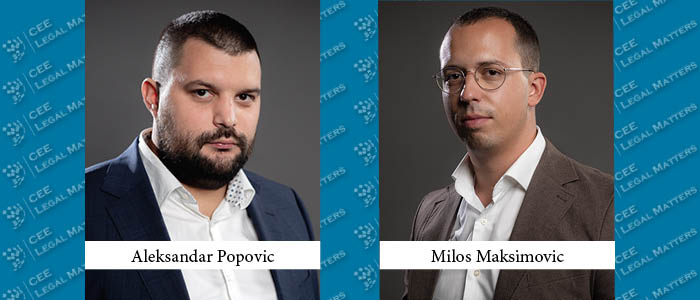Both consumers and companies that are using the software in everyday activities, either for business or pleasure, usually do not own the software, but only have limited rights granted by a license agreement with specifically defined scope and terms of use. Why the misunderstanding? In general, software is a set of instructions or programs used to operate computers and execute specific tasks. It is an intangible object, opposite to hardware compartments. With the latter, the ownership perception is clear when you are buying it. On the other hand, software brings confusion to end-users - is it purchased or licensed? Because the difference is essential.
Often, tech companies are not selling their valuable software but only grant a non-exclusive license with defined terms of use, scope, allowed territories, and payments (royalties). This is relevant for both b2b and b2c relationships due to the advantages of licensing compared to the sale of the software. Advantages are numerous – it is simple and cost-efficient, the licensor remains the owner and in control over software and code, it can license software to numerous entities or individuals (non-exclusive license) and they can sub-license that software to others on the market (if it’s allowed under the main license agreement), etc.
Software is a copyrighted work of authorship
In Serbia, software is regulated by the Law on Copyright and Related Rights (‘’IP Law’’) as a work of authorship that is copyrighted, if it represents the original spiritual creation of the natural person (AI-generated creations excluded), expressed in a certain form, regardless of its artistic, scientific, or other value, regardless of its purpose, size, content, manner of expression, as well as the permissibility of public announcement of its content. IP Law prescribes that works of authorship are written works (e.g., books, brochures, articles, translations, computer programs in any form of their expression, including their preparatory design material and others).
Therefore, software is a work of authorship protected by copyright and can be subject to licensing.
(Non) Exclusive license
In Serbia, the Law on Contracts and Torts (‘’Contract Law’’) prescribes that the license agreement is a written-form agreement that mandates the licensor[1] to assign to the licensee, in whole or partially, the right to use the invention, technical knowledge, and experience (‘’know-how’’), trademark, sample or model, and the licensee[2] is mandated to pay the licensor a consideration (fee) in return. According to Contract Law, the licensee acquires the exclusive right to use the subject of the license only if this is explicitly agreed (so-called ‘exclusive license’).
Oftentimes, an exclusive license creates confusion between the parties whether the rights are exclusively assigned to the licensee or whether the licensor is left with some prerogatives. Contract Law does not leave a place for any misunderstanding, so it explicitly prescribes that a licensor is prohibited from using the licensed object itself when the exclusive license is granted. Although the law is clear in this sense, it is better to articulate prohibition explicitly under the license agreement to enable transparent and stable cooperation between parties. On the other hand, if the license agreement does not indicate the type of license, it is considered that a non-exclusive license is granted (this means that the licensor can grant to other parties simultaneously or can use the licensed object itself).
License does not transfer ownership
License agreements are not the same as the ownership transfer agreement. This makes all the difference keeping in mind the scope of licensees’ rights in comparison with a software owner, for example. There is a common misconception because licensees are using the licensed software as if they were the owner (especially with an exclusive license). This results in serious contract breaches, damages, and a time-consuming procedure for a licensor to pursue and prove such misconduct. License agreements are executed in written form, but in a practical sense, when used by a group of end-users (like end-user licensing agreement – ‘EULA’) they are provided as a precondition for installing the licensed software on one’s computer (when end-users are required to select ‘Agree’ a couple of times before installation).
This brings yet another confusion because end-users are sometimes not aware that this type of adhesion and acceptance of terms represent a license agreement.
The Serbian courts on software licensing
In one of the recent cases (Belgrade Court of Appeal confirmed the Belgrade Higher Court decision) related to the software licensing, the court has found that the defendant (licensee) was obliged to pay the damages to the claimant (licensor) due to the use of the software contrary to the license agreement. Therein, the license agreement was an integral part of the software, so the installation of the software was possible only with the consent to the conditions of the said agreement.
Each copy of this software that was distributed to the defendant under the license agreement, was protected by a single-user hardware key. However, the defendant began to use the software in a server way by creating one computer acting as a server on which it installed licensors' software with a single-user hardware key, to which it connected numerous other computers that used the installed software without requiring a key, bypassing the hardware protection. In this way, the defendant overcame the hardware protection on the licensor's software and used its software on multiple computers with a single license and a single hardware key. In simple terms, the defendant has made ‘virtual duplicates’ of the licensed software (by remote access to the software from other computers).
The defendant did not make copies of the software by placing the program in the computer's memory. Regardless, the defendant has violated the copyright (Article 20 paragraph 5 of the then-valid IP Law). The court has found that this ‘virtual duplication’ is equal to unauthorized use by ‘physical duplication’ as explicitly regulated under IP Law. The ratio behind the court’s conclusion was that the IP Law guarantees the author an exclusive right to reproduce copies of work and it was established to protect authors. So, authors are protected from unauthorized reproduction of the work done in almost any manner (not just the ways explicitly defined under the IP Law).
The court took the stance that the defendant had violated the copyrighted work and infringed the economic rights of the software owner (licensor) guaranteed under the IP Law. For any (economic) exploitation of the author's work by another entity/person, the author is entitled to compensation. Having in mind that the defendant, contrary to the accepted terms of use of the software, made economic use of the software by unauthorized virtual duplication, the licensor was entitled to payable damages for the harm caused by copyright infringement and to the extent of the achieved benefits by such economic exploitation. Damages were calculated by court experts using the software’s average unit rate use in EUR multiplied by a number of virtual duplications made by the defendant.
Conclusion
The software is an intangible asset and users sometimes cannot comprehend the legal restraints to its use as well as the legal repercussions in case of breach. The other issue is the misconception about software licensing. End-users usually forget or omit that the license agreements do not transfer any ownership over software but only grant limited rights. However, being ignorant of the law does not release from liability, given that any use contrary to the license is deemed a breach of the license agreement enabling the breached party to seek damages and stopping such illegal actions.
The growing market of ICT and the technology sector in general (especially with the development of AI) enables numerous applications to appear almost daily. To avoid possible license breaches, liability for damages, and other legal repercussions, end-users and companies must become aware of the IP rights mandatory laws, and the boundaries of the license agreements, and get acquainted with the thorough license terms even though it’s sometimes the toughest part.
By Aleksandar Popovic, Partner, and Milos Maksimovic, Senior Associate, JPM Partners


